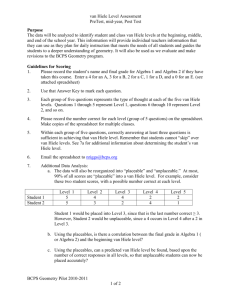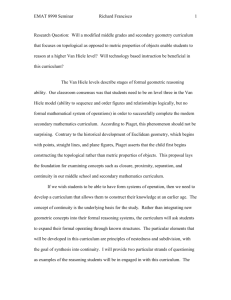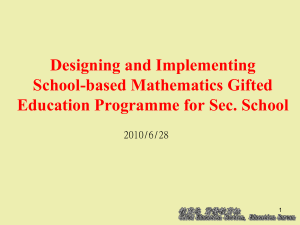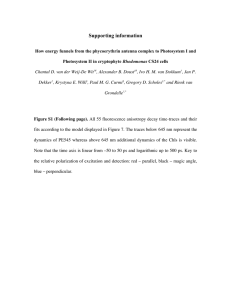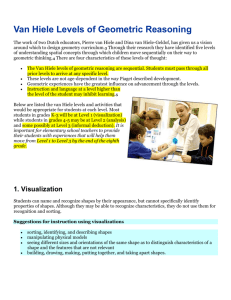A van Hiele Web-based Learning System with Knowledge Management for Programming
advertisement
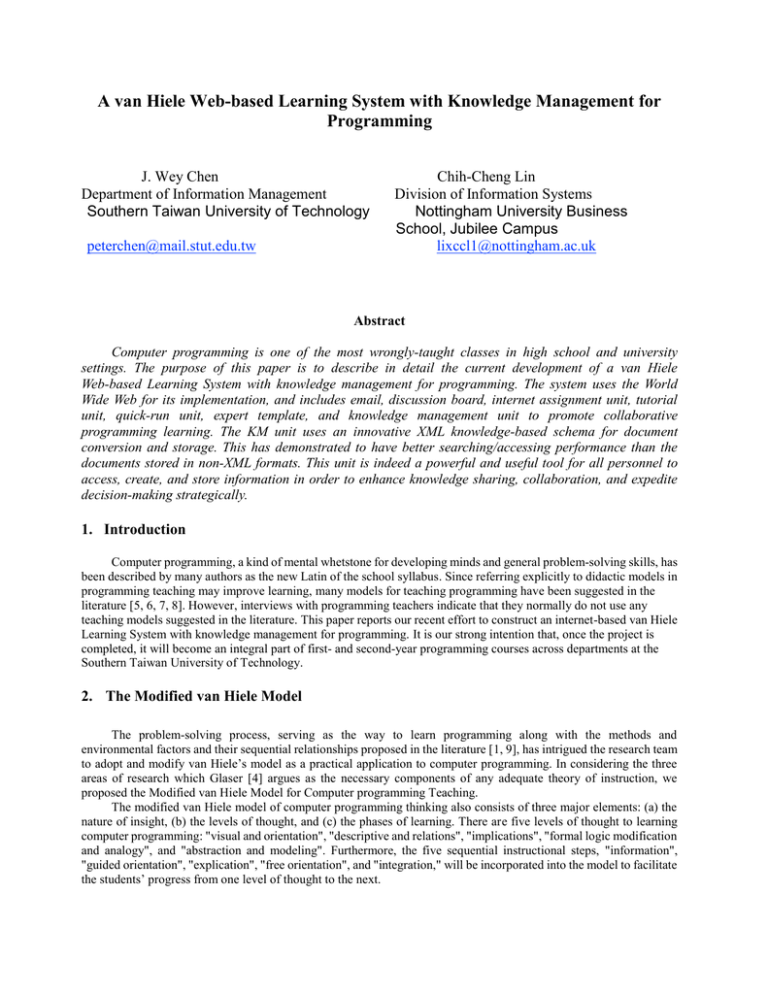
A van Hiele Web-based Learning System with Knowledge Management for Programming J. Wey Chen Department of Information Management Southern Taiwan University of Technology peterchen@mail.stut.edu.tw Chih-Cheng Lin Division of Information Systems Nottingham University Business School, Jubilee Campus lixccl1@nottingham.ac.uk Abstract Computer programming is one of the most wrongly-taught classes in high school and university settings. The purpose of this paper is to describe in detail the current development of a van Hiele Web-based Learning System with knowledge management for programming. The system uses the World Wide Web for its implementation, and includes email, discussion board, internet assignment unit, tutorial unit, quick-run unit, expert template, and knowledge management unit to promote collaborative programming learning. The KM unit uses an innovative XML knowledge-based schema for document conversion and storage. This has demonstrated to have better searching/accessing performance than the documents stored in non-XML formats. This unit is indeed a powerful and useful tool for all personnel to access, create, and store information in order to enhance knowledge sharing, collaboration, and expedite decision-making strategically. 1. Introduction Computer programming, a kind of mental whetstone for developing minds and general problem-solving skills, has been described by many authors as the new Latin of the school syllabus. Since referring explicitly to didactic models in programming teaching may improve learning, many models for teaching programming have been suggested in the literature [5, 6, 7, 8]. However, interviews with programming teachers indicate that they normally do not use any teaching models suggested in the literature. This paper reports our recent effort to construct an internet-based van Hiele Learning System with knowledge management for programming. It is our strong intention that, once the project is completed, it will become an integral part of first- and second-year programming courses across departments at the Southern Taiwan University of Technology. 2. The Modified van Hiele Model The problem-solving process, serving as the way to learn programming along with the methods and environmental factors and their sequential relationships proposed in the literature [1, 9], has intrigued the research team to adopt and modify van Hiele’s model as a practical application to computer programming. In considering the three areas of research which Glaser [4] argues as the necessary components of any adequate theory of instruction, we proposed the Modified van Hiele Model for Computer programming Teaching. The modified van Hiele model of computer programming thinking also consists of three major elements: (a) the nature of insight, (b) the levels of thought, and (c) the phases of learning. There are five levels of thought to learning computer programming: "visual and orientation", "descriptive and relations", "implications", "formal logic modification and analogy", and "abstraction and modeling". Furthermore, the five sequential instructional steps, "information", "guided orientation", "explication", "free orientation", and "integration," will be incorporated into the model to facilitate the students’ progress from one level of thought to the next. Van Hiele’s theory of geometry learning is sequential and each of the five levels in this study can be characterized by several identifiable student actions. The theory does not discriminate chronological ages [2, 10]. It has been proven that instruction developed in this sequence prompted the acquisition of the next higher level of computer programming learning [3]. Moreover, students were found to commit more common programming mistakes if these five levels of thought were not properly modeled. 3. System architecture . In considering the results from the literature review and in responding to the five sequential instructional steps employed in the Van Hiele geometry model, the van Heile Web-based Learning System designed to enhance programming learning relies on seven technologies, as shown in Figure 1. Each tool in the system is properly designed and can be employed to partially address one or many factors that cause problems to learning programming. The function and design principle of each component is described as follows: Figure 1 The Architectural Structure of the van Heile Web-based project E-mail. E-mail is used for communication between the instructor and individual students or the entire class. Specific communication types supported by e-mail include: (1) time-sensitive announcements to the class (i.e. scheduling and assignment changes), and (2) faster student questions and instructor response interactions. Discussion board. Discussion boards provide an efficient means of communication and create student support outside of the class. This also gives the shy students an opportunity to fully participate since they may feel more comfortable in the electronic environment. The instructor can then post a “thread,” or topic, for discussion and have the students respond to the topic within a specified period of time. Similar to being in a chatroom, the instructor will monitor the discussion for content and appropriateness. Internet assignment units. Detailed information presented in this unit can reduce the classroom time allocated to technical and project support which, in turn, allows greater depth and breadth of topics to be covered in class.

